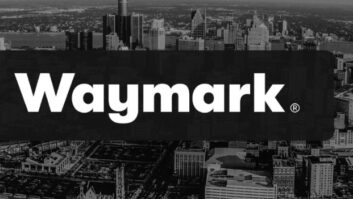
I believe in radio and I believe in radio’s future. But the hard truth is that if broadcasters don’t evolve with both the technological shifts and an understanding of how our audience is changing, we may sink our own ship.
With Internet radio becoming available in the car, the entire landscape is changing, and fast.
But radio itself is still solid. Everyone knows radio. Even those not technically making radio still call it radio (XM Satellite “Radio,” Pandora “Radio,” etc.)
WHERE IS YOUR AUDIENCE?
The great Green Bay Packers coach Vince Lombardi once explained the secret of his team’s success. He would tell his players, “Go where the opening in the lineup is, not where you think the opening ought to be.”
It worked for football and it works for radio. As a broadcaster, if you want to thrive in today’s digital world, you need to go where the audience is.
Your listeners are getting their media, both information and entertainment, online or from their mobile devices, which they are using constantly.
And while the metrics haven’t caught up with the new delivery systems, the audience is there. Arbitron and Nielsen are trying to figure out a way to measure it accurately, but in fact, the audience is likely not declining. It’s probably growing.
Radio is, and always has been, in the content business. But now it’s time to add another element: Content in combination, delivering across multiple platforms.
And that content had better be good. Most listeners are distracted easily and have short attention spans. PPM proves it: If they’re bored, they’re gone.
Radio now includes written pieces, photos, video and headlines for social media (Twitter, Facebook, etc.), as well as long-form audio. All content is online, interactive and mobile.
Newspapers that are staying afloat are surviving because they embraced this multiplatform approach early on. While it may not have paid off immediately with instant cash, those who invested early are now reaping the rewards of a faithful following. They saw the writing on the wall and knew that they had to change.
The entire world is online, and radio has got to keep up. Name one business you interact with that is not online. You probably can’t. From banking, to buying groceries, to shopping for birthday presents, to checking the weather forecast … it’s all online.
Look at Arbitron numbers in Los Angeles, where Clear Channel encodes the stream of KFI(AM). A year ago, the online stream of the morning drive show with Bill Handel actually beat KABC(AM)’s over-the-air signal in the 25–54 demographic for that time slot.
Norm Pattiz, who created Westwood One, just launched PodcastOne.com, an aggregated one-stop site that offers “radio” shows from hundreds of online broadcasters for listeners to download. With stars like Adam Corolla, it will make money by packaging online content, for shows with more than a million listeners, to sponsors.
Public radio station sites creatively grow audience by providing extra content that you can’t get on air, and continue to maintain a connection with the listener. This is what radio does best.
It’s the answer no manager or station owner wants to hear: Creating quality content costs money. Invest money in talent and producers. Hire good people. It takes vision and it takes risk. You’ve got to spend it to make it.
Look at top-rated WTOP(FM) in Washington. By working across all platforms and adding staff to create relevant, unique content, they’ve grown both their audience and their revenue.
Castanet radio in Kelowna, Canada is thriving entirely online. And there are ever-increasing numbers of examples.
DON’T KILL THE GOOSE
Companies and stations that have shortsightedly cut personalities and support staff, and run satellite or automated programming to save on personnel costs, are finding they have lost their connection to their audience. Instead of profiting from radio’s golden eggs, they’ve actually killed the goose.
To win our audience back, it will cost money. To hire personalities that attract audience with unique content and who can make the emotional connection? Costs money.
When was the last time you heard a birthday dedication? Or some way a station host made a local personal connection with a listener; one that created a feeling of community? That has all moved online.
You can win in a digital world by investing in people who specialize in digital, whose full-time job is connecting with the audience online. You can’t just hire an intern or make this one more thing the promotion or sales assistant has to take care of.
TV stations, newspapers and online media have made social media a full-time gig. It’s a dedicated professional position. And it involves a lot of work.
If you want to win the digital audience, make your digital content manager needs to be a full-time gig. The job description includes packaging and developing specific content for digital and online, in conjunction with your on-air programming. This will increase your brand and help you better connect with, serve and grow your audience
WHAT ABOUT THE NAB?
The National Association of Broadcasters has been in a strange position; it wants radio to succeed, but seems somewhat ambivalent about promoting any form of media other than traditional broadcasting. This could be an overabundance of caution, because traditional broadcasting loses viability when stations don’t get onboard across platforms.
All business has an element of gambling to it. If you’re in business, you know that to succeed, you have to invest, try new things, hire good people and take risks. It takes time, but the pay off can be great.
The one question from all managers is, “How do we make money off of this right now?” What’s the return on investment? If they don’t see an immediate payoff, stations are reluctant to invest. But remember, it’s a long game. If managers in radio aren’t willing to risk investing now for payoff in the future, everyone loses. Quality content across multiple platforms pays off.
Again, consider public radio: Podcasts in public radio are bringing in lots of money. Sponsorships on the podcasts (check out “This American Life” or “Radio Lab” online, to start) are sold at a premium. They have verifiable numbers of listeners.
Public radio invested early in online products, by hiring specific producers to help create content. And they are now reaping the rewards in ratings and revenue.
Put in the time to do it right, and spend the money, and we can win this.
Opinions are the author’s. Valerie Geller is president of broadcast consulting firm Geller Media International; she leads workshops and seminars and trains broadcasters to become more powerful communicators in the digital world. She also is author of “Beyond Powerful Radio: A Communicator’s Guide to the Internet Age.” Visit www.gellermedia.com.












